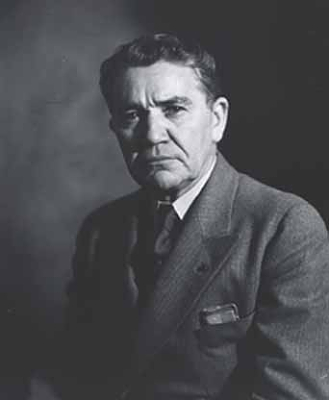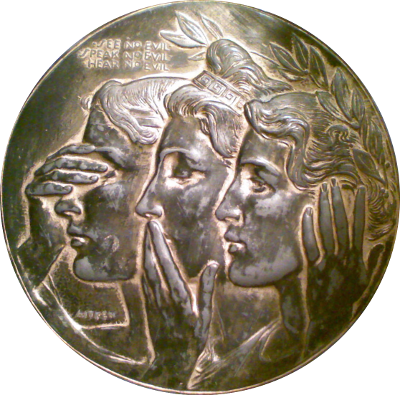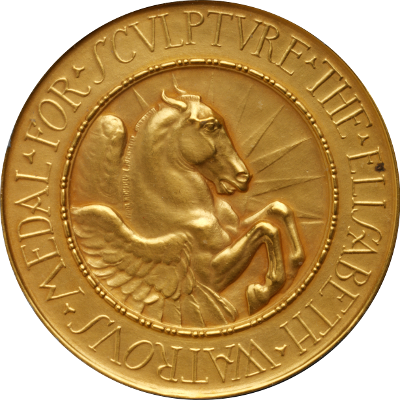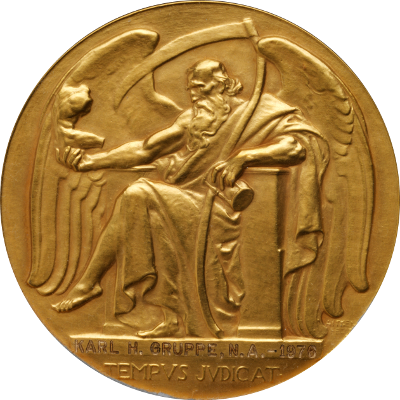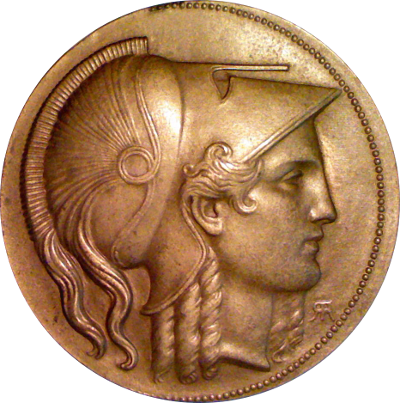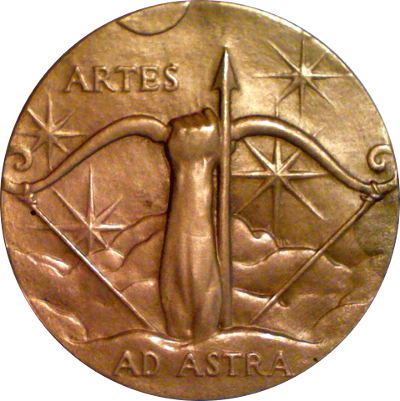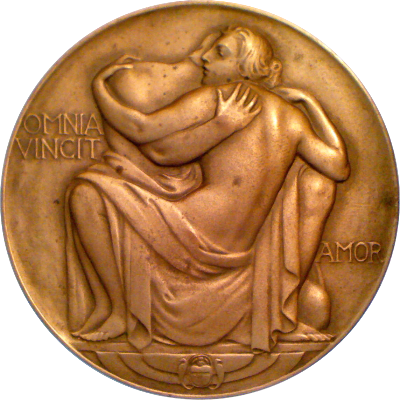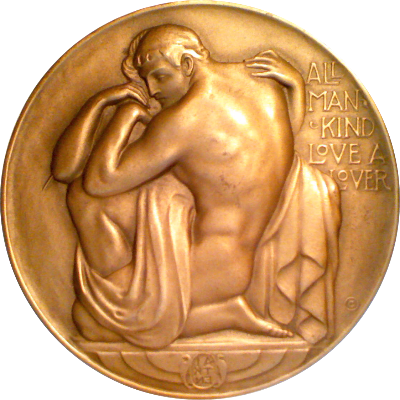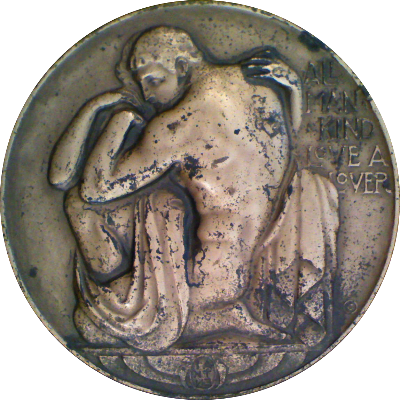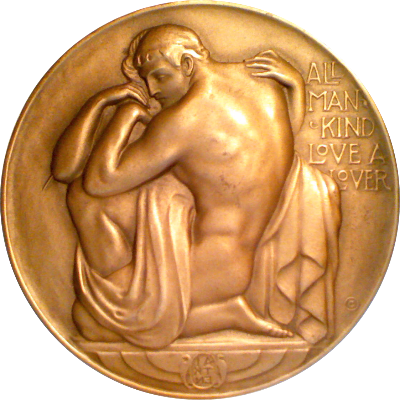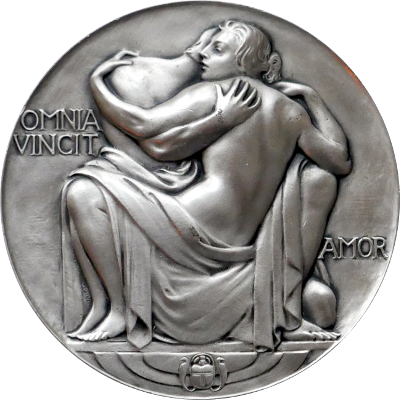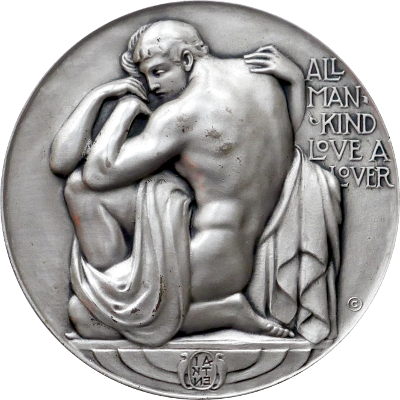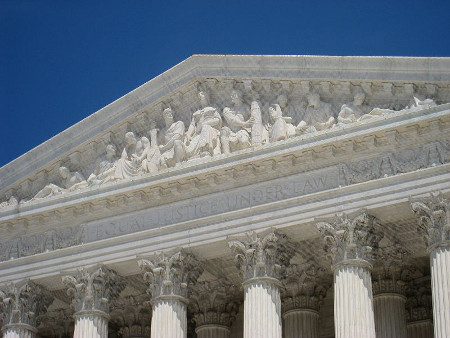Born to Scottish parents in San Francisco, Robert Ingersoll Aitken studied with Douglas Tilden at the Mark Hopkins Institute of Art, also called the California School of Design - now the San Francisco Art Institute. After a brief three month stay in Paris in 1895 he returned home to open his own studio. The San Francisco Bohemians Club, one of Aitken's first and most faithful supporters, gave Aitken his first major commission and hosted his first public exhibition in 1896. In 1901 he won the competition for a memorial to Admiral George Dewey and was widely praised for his design. From 1901 until 1904 he was an instructor at the Institute at which he had previously been a student. In 1904 he moved to Paris where he continued his studies for three more years. During his time in Paris he met Laure Louise Deligny and the two were married in 1907, the same year he returned to New York City. Upon his return he found employment as an instructor at the Art Students League. Aitken and Laure Louise had two children, a girl named Lole Emile (1911-1983) and a boy.
His works include the Science fountain and Great Rivers statues at the Missouri State Capitol, the "Iron Mike" statue at Parris Island, South Carolina, several military sculptures at West Point, the Temple of Music and the Dewey Monument in San Francisco, California, and sculptural works for the Liberty Memorial in Kansas City, Missouri. Aitken also produced the Fountain of Earth for San Francisco's Panama Pacific Exposition in 1915.
Perhaps his most famous work is the West Pediment of the United States Supreme Court building, which bears the inscription "Equal Justice Under Law." The sculpture, above the entrance to the Supreme Court Building, is of nine figures - Lady Liberty surrounded by figures representing Order, Authority, Council, and Research. These allegorical figures were in fact sculptures of real people who had a role in the creation of the building. Aitken himself is depicted in the pediment, seated to the proper left of Liberty with Chief Justice Charles Evans Hughes. Many of his works were carved by the Piccirilli Brothers, including the pieces for the National Archives Building.
Aitken's medallic works include the majestic Panama-Pacific Exposition $50 gold piece in 1915, the 1921 American Numismatic Society medal of 1921, the Watrous Gold medal, which he himself received in 1921, "Omnia Vincit Amor" in the prestigious Society of Medalists series in 1937, and many others.
Aitken was an artistic conservative, defending classic forms and rigorous training at a time when young artists were rebelling against the traditional artistic institutions. His firmly conservative stance was on exhibit in court when he was called as an expert witness in a court case pitting Romanian modernist Constantin Brancusi against the U.S customs service. An American collector had purchased a Brancusi sculpture entitled Oiseau and customs officials had refused to classify it as art, thereby imposing a heavier import duty on it. Aitken was being cross-examined by Brancusi's attorney when the following exchange took place:
How many works of art of Mr. Brancusi's have you seen?
I haven't seen any.
You haven't seen any works by Brancusi?
You said "works of art." I have not.
Have you seen any of his works?
I have seen works like that [pointing to Oiseau] but I haven't seen any works of art.
In other words, you do not regard them as works of art.
I do not.
In contrast to De Lue, another artistic conservative who was most productive approximately thirty years after Aitken, Aitken's reputation did not suffer as a consequence of his hard-line stance against modernism. In fact, Aitken probably benefited from the notoriety he gained.
Aitken married a second time in 1934 and died just fifteen year later in 1949 aged 71.
